Best Books for C Programming
In this article, you will learn about the best books for C programming. But before discussing the C books, you must know about C programming.
What is C programming?
At Bell Labs in the early 1970s, Dennis Ritchie developed the general-purpose computer language C. It is one of the most well-known and recognized programming languages. The procedural language C uses a set of sequential instructions to solve problems.
The effectiveness, clarity, and adaptability of C programming are well recognized. It provides low-level memory access enabling programmer's fine-grained control over the hardware resources of a computer system. The development of embedded systems, system programming, and high-performance applications may all be done well using C.
A small set of constructs and keywords make up the language itself which is the basis for software. Plain-language C applications that have been translated into machine-readable binary code can be run on a computer.
Key features of C programming include:
- Portability: C programs can be written once and compiled to run on various platforms and operating systems with minimal changes.
- Structured Programming: C supports modular programming through functions organizing code into reusable and manageable blocks.
- Pointers: C provides the ability to manipulate memory addresses directly, which enables efficient memory management and the implementation of data structures.
- Standard Library: C has a rich standard library that provides functions for common tasks such as input/output operations, string manipulation, and mathematical computations.
- Efficiency: C allows for fine-grained control over system resources, making it suitable for high-performance and low-level hardware interaction applications.
Generally, C programming is widely used in various domains, including operating systems embedded systems, game development, scientific computing, and software development. It serves as a foundation for many other programming languages and has greatly influenced the field of computer science.
Top Books for C programming:
- "The C Programming Language" by Brian W. Kernighan and Dennis M. Ritchie
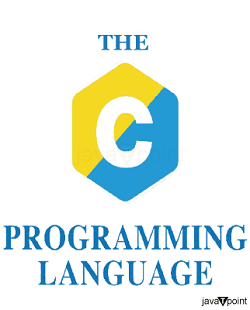
"The C Programming Language" by Brian W. Kernighan and Dennis M. Ritchie
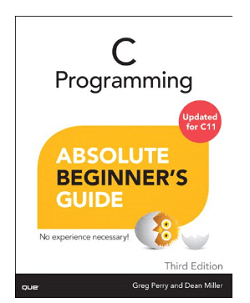
"The C Programming Language" by Brian W. Kernighan and Dennis M. Ritchie is the definitive book on the C programming language. It is commonly called "K&R C" or simply "The C Programming Language". Here are some key points about the book:
- Authors: Brian W. Kernighan and Dennis M. Ritchie, the co-creators of the C programming language, wrote this book. Dennis Ritchie is particularly known for designing and implementing the C language.
- Content: The book provides a comprehensive introduction to the C programming language. It covers C's fundamental concepts, syntax, and features, including variables, data types, control structures, functions, arrays, pointers, and more.
- Clarity and Simplicity: One of the book's strengths is its clear and concise writing style. It straightforwardly presents concepts, making them accessible to beginners while also being valuable to experienced programmers.
- Examples and Exercises: The book includes numerous examples and exercises to reinforce the concepts discussed. These exercises help readers practice and solidify their understanding of C programming.
- Programming Style: "The C Programming Language" emphasizes good programming practices and demonstrates effective programming techniques. It promotes clarity, simplicity, and efficiency in coding.
- Compact Size: Despite its comprehensive coverage, the book is relatively small, making it a concise reference for C programming. It provides a condensed yet complete overview of the language.
- Influence: "The C Programming Language" has significantly impacted the field of programming. It has been widely regarded as a classic and has greatly contributed to the popularity and widespread adoption of the C language.
- Versions: The book has been published in multiple editions. The first edition, published in 1978, documented the original version of the C language. Subsequent editions have been updated to reflect changes and additions to the language over time.
"The C Programming Language" is highly recommended for anyone interested in learning or mastering the C programming language. It serves as a tutorial and a reference providing valuable insights into the language's design philosophy and best practices.
"C Programming Absolute Beginner's Guide" by Greg Perry and Dean Miller
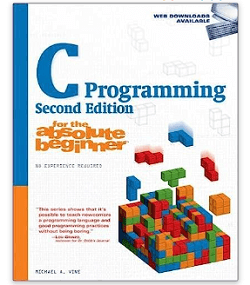
"C Programming Absolute Beginner's Guide" by Greg Perry and Dean Miller is a popular book that aims to teach C programming to beginners without prior programming experience. Here are some key points about the book:
- The book starts with an overview of the C language and its history, explaining its significance and widespread use in various industries. After that, it dives into programming fundamentals covering variables, data types, operators, and expressions. The authors use simple and easy-to-understand language to explain these concepts, ensuring that beginners can grasp them effectively.
- As the book progresses, it introduces control structures such as if statements loops and switch statements. It also covers functions emphasizing their importance in organizing code and promoting reusability. The authors guide readers on how to define and use functions effectively.
- The book discusses advanced topics like arrays, strings, pointers, and structures. It explains how these concepts are used in C programming and provide practical examples to reinforce the learning process. Additionally, the authors introduce file I/O operations, enabling readers to work with external files and handle input and output in their programs.
- Throughout the book, Greg Perry and Dean Miller include numerous code examples and exercises, allowing readers to practice what they have learned. The exercises range from simple to complex, helping beginners builds confidence and improves their programming skills gradually.
- One notable aspect of "C Programming Absolute Beginner's Guide" is its hands-on approach. The authors encourage readers to write and execute their code, reinforcing the concepts through practical implementation. The book also provides tips and best practices to help readers develop good coding habits and avoid common pitfalls.
"C Programming for the Absolute Beginner" by Michael Vine
However, several other books are available that cover C programming for beginners. Some popular titles include "C Programming Absolute Beginner's Guide" by Greg Perry and Dean Miller (as mentioned earlier), "C Programming Language" by Brian W. Kernighan and Dennis M. Ritchie (often referred to as the "K&R" book), and "Head First C" by David Griffiths and Dawn Griffiths.
These books provide comprehensive introductions to C programming and are widely recognized within the programming community. They cover the fundamentals of C, including syntax, data types, control structures, functions, arrays, pointers, and more. They often include practical examples, exercises, and tips to help beginners learn and apply their knowledge effectively.
"Head First C" by David Griffiths and Dawn Griffiths
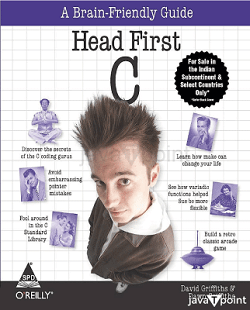
"Head First C" by David Griffiths and Dawn Griffiths is a book designed to teach the C programming language uniquely and engagingly. The "Head First" series is known for its interactive and visually-rich approach to learning, making complex topics more accessible to beginners.
The book introduces C programming basics, including variables, data types, operators, and control structures. It gradually progresses to more advanced topics like arrays, strings, pointers, memory management, and file I/O. The authors use a combination of explanatory text, diagrams, puzzles, and exercises to reinforce the concepts and keep readers engaged.
One of the key features of "Head First C" is its focus on hands-on learning. The book encourages readers to write and experiment with code throughout learning. It provides numerous code examples, exercises, and projects, allowing readers to apply what they've learned in real-world scenarios.
In addition to covering the core concepts of C programming, the book also explores important topics such as debugging modular programming and working with libraries. It emphasizes good programming practices including code organization documentation and error handling.
"Head First C" also introduces readers to more advanced C features like dynamic memory allocation, linked lists, and data structures. It provides a solid foundation for those interested in pursuing further computer science or software development studies.
"Learn C the Hard Way" by Zed A. Shaw
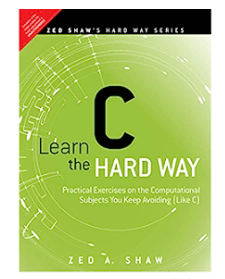
"Learn C the Hard Way" is a book by Zed A. Shaw that aims to teach the C programming language to beginners in a practical and hands-on manner. The book follows the concept of "learning by doing" and encourages readers to engage with the language through exercises and projects actively.
The title "Learn C the Hard Way" may sound intimidating, but it reflects the author's approach to teaching programming through extensive practice and repetition. The book emphasizes the importance of understanding the fundamental concepts of C and mastering them through deliberate practice.
Here are some key aspects of "Learn C the Hard Way":
- Practical exercises: The book presents a series of exercises that gradually introduce different aspects of the C language. Each exercise focuses on a specific topic, such as variable, functions, pointers, memory allocation, and file I/O. The exercises are designed to reinforce concepts and build practical programming skills.
- Minimalistic style: Zed A. Shaw's writing style is straightforward and concise. The book avoids excessive jargon and focuses on explaining concepts in a simple and accessible manner. It makes it easier for beginners to grasp the fundamentals of C programming.
- Code examples: Throughout the book, the author provides numerous code examples illustrating the concepts taught. These examples serve as templates for readers to understand the syntax and structure of C programs.
- Debugging and problem-solving: "Learn C the Hard Way" emphasizes the importance of debugging skills and problem-solving techniques. The author encourages readers to experiment, make mistakes and learn from them. Understanding and fixing errors is an integral part of the learning process.
- Project-based learning: The book includes several projects that allow readers to apply their newly acquired knowledge. By working on projects, readers gain practical experience and learn how to tackle real-world programming challenges.
It's worth noting that "Learn C the Hard Way" is part of a series of programming books by Zed A. Shaw, including titles like "Learn Python the Hard Way" and "Learn Ruby the Hard Way". Each book in the series follows a similar hands-on approach to teaching programming languages.
"C Programming: A Modern Approach" by K. N. King
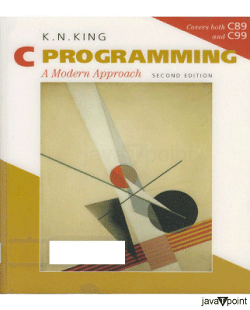
"C Programming: A Modern Approach" is a widely acclaimed book by K. N. King that provides a comprehensive guide to the C programming language. The book is known for its approachable style, detailed explanations, and emphasis on modern programming practices.
Here are some key aspects of "C Programming: A Modern Approach":
- Comprehensive coverage: The book covers many topics, starting from C programming basics and progressing to more advanced concepts. It covers data types, control structures, functions, arrays, pointers, memory management, file I/O, and more. The book also provides insights into best practices and programming techniques.
- Modern programming practices: Unlike some older C programming books, "C Programming: A Modern Approach" considers modern programming practices and coding conventions. It includes discussions on modular programming, testing, and debugging, which are essential in real-world programming scenarios.
- Examples and exercises: The book provides numerous examples and exercises to reinforce the concepts being taught. The examples range from simple illustrations of syntax to more complex programming scenarios. The exercises at the end of each chapter allow readers to practice and solidify their understanding.
- Clear explanations and illustrations: N. King is known for his clear and concise writing style. The book uses plain language and provides step-by-step explanations of programming concepts. Additionally, it includes diagrams and illustrations to help readers visualize and understand complex ideas.
- Real-world applications: "C Programming: A Modern Approach" demonstrates how C is used in practical applications, such as systems programming, network programming, and graphical user interface (GUI) development. It also discusses the interactions between C and other programming languages, such as C++.
- Updates and revisions: The book has undergone several revisions to keep it up to date with the evolving C language standards and programming practices. It ensures that readers learn the most relevant and modern aspects of C programming.
"C Primer Plus" by Stephen Prata
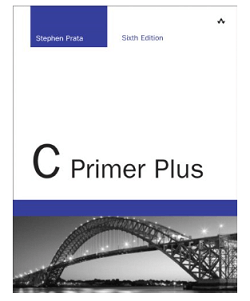
"C Primer Plus" is a comprehensive book on the C programming language written by Stephen Prata. It introduces C programming and provides a solid foundation for beginners. The book covers many topics, starting from the basics and progressing to more advanced concepts.
Here's an overview of what you can expect to find in "C Primer Plus":
- Introduction to C: The book begins with an introduction to the C programming language, its history, and the basic structure of a C program. It explains the fundamental concepts such as variables, data types, operators, control statements, and functions.
- Data Handling: Prata covers topics related to data handling, including input and output operations, formatted input/output, file input/output, and error handling.
- Control Statements: The book explores various control statements available in C, such as if statements, loops (for, while, and do-while), switch statements, and the use of logical and relational operators.
- Functions: The concept of functions is explained in detail, including function prototypes, parameter passing, return values, and the creation of user-defined functions. The book also covers recursion and function pointers.
- Arrays and Pointers: Prata delves into arrays, pointers, and their relationship. He explains how to declare and use arrays, multidimensional arrays, and strings and how pointers can be used for array manipulation and dynamic memory allocation.
- Structures and Memory Allocation: The book introduces structures to group-related data items. It covers how to declare and access structure members, create arrays of structures, and use structures within other structures. Additionally, it explains memory allocation and dynamic memory management using functions like malloc() and free().
- File Input/Output: Prata covers file handling in C, including opening, reading, writing, and closing files. He explains file modes, error handling, and the use of standard I/O functions.
- Advanced Topics: The latter part of the book covers more advanced topics such as bitwise operators, enumeration, preprocessor directives, variable argument functions, and an introduction to the C Standard Library.
Prata provides numerous examples and exercises throughout the book to reinforce the concepts discussed. These exercises range from simple to more complex, allowing readers to practice and gain hands-on experience with the language. The book also includes review questions and programming projects at the end of each chapter to further enhance learning.
"C Primer Plus" is popular for beginners due to its comprehensive coverage and easy-to-understand explanations. It provides a solid foundation in C programming, making it a valuable resource for anyone looking to learn and master the language.
"Expert C Programming: Deep C Secrets" by Peter van der Linden
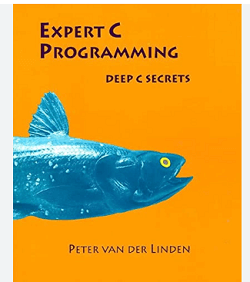
"Expert C Programming: Deep C Secrets" is a book by Peter van der Linden that focuses on advanced topics and techniques in the C programming language. It is intended for programmers who already understand C well and want to deepen their knowledge and expertise.
Here's an overview of what you can expect to find in "Expert C Programming: Deep C Secrets":
- Advanced Pointers: The book delves into advanced pointer concepts and techniques, including arithmetic, function pointers, and pointer casting. It explores how pointers can be used for memory manipulation, data structures, and low-level programming.
- Memory Management: Van der Linden discusses memory management techniques in C, including dynamic memory allocation using functions like malloc() and free(). He covers memory leaks, corruption, and techniques to allocate and deallocate memory effectively.
- Performance Optimization: The book provides insights into writing efficient C code and optimizing performance. It covers algorithmic complexity, profiling, benchmarking, and optimizing code for speed and memory usage.
- File I/O and System Calls: Van der Linden explores advanced file input/output operations, including low-level I/O using system calls. He explains techniques for working with files, handling errors, and understanding the underlying operating system's behavior.
- Structs, Unions, and Bit Manipulation: The book delves into the advanced usage of structs and unions, including memory packing and bit manipulation techniques. It covers bit fields, bit masks, and bitwise operations.
- Preprocessor and Macros: Van der Linden discusses the C preprocessor in-depth, including macro usage, conditional compilation, and using macros to improve code readability and maintainability. He also covers potential pitfalls and best practices.
- Debugging and Testing: The book provides insights into debugging techniques and strategies for finding and fixing bugs in C programs. It covers tools like debuggers and profilers and techniques for writing effective test cases and performing unit testing.
- Advanced Language Features: Van der Linden explores advanced language features of C, such as function pointers, variadic functions, volatile variables, and inline assembly code. He provides practical examples and explanations of these features.
Throughout the book, Van der Linden uses real-world examples and anecdotes to illustrate the concepts and techniques. He also shares insights and tips based on his experience as a software engineer.
"Expert C Programming: Deep C Secrets" is a book aimed at programmers who already understand C and want to enhance their skills further. It explores advanced topics and provides deep insights into the language, making it a valuable resource for those seeking to become experts in C programming.
C Programming: A Beginner's Course" by Noel Kalicharan
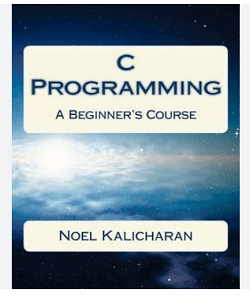
"C Programming: A Beginner's Course" is a book by Noel Kalicharan that aims to teach beginners the fundamentals of the C programming language. It provides a step-by-step approach to learning C, assuming no prior programming experience.
Here's an overview of what you can expect to find in "C Programming: A Beginner's Course":
- Introduction to C: The book starts with an introduction to C programming, its history, and the basic structure of a C program. It explains how to set up a C development environment and introduces the concept of a compiler.
- Variables and Data Types: Kalicharan covers the fundamentals of variables, data types, and operators in C. He explains how to declare and use variables, the types of data available in C, and how to perform basic operations on them.
- Control Structures: The book explores control structures such as decision-making with if statements, looping with while and for loops, and switching statements for multi-way decisions. It also covers the concept of logical operators and how to use them effectively.
- Arrays and Strings: Kalicharan explains using arrays in C, including one-dimensional and multidimensional arrays. He covers array initialization, accessing array elements, and manipulating array data. The book also covers C-style strings and string-handling functions.
- Functions and Pointers: The concept of functions is introduced, including function prototypes, parameter passing, and return values. Kalicharan also covers the basics of pointers, explaining how to declare, initialize, and use pointers in C.
- Input and Output: The book covers input and output operations in C, including reading from and writing to files, using standard input/output functions, and formatting output.
- Structures and Dynamic Memory: Kalicharan introduces structures to group related data together. He explains how to declare and use structures and allocate and deallocate memory dynamically using functions like malloc() and free().
- File Handling: The book explores file input/output operations more deeply. It covers opening, reading, writing, and closing files, error handling, and working with binary files.
Throughout the book, Kalicharan provides numerous examples and exercises to reinforce the concepts discussed. These exercises are designed to help readers practice and gain hands-on experience with the language. The book also includes review questions and summaries at the end of each chapter to reinforce learning.
"C Programming: A Beginner's Course" is intended for individuals new to programming who want to learn C from scratch. It provides a comprehensive introduction to the language, guiding beginners through the essential concepts and helping them build a solid foundation in C programming.
"C Programming: From Problem Analysis to Program Design" by D. S. Malik
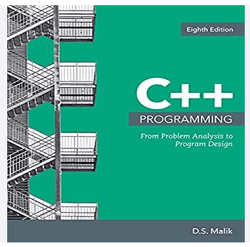
"C Programming: From Problem Analysis to Program Design" is a book by D. S. Malik that focuses on teaching the C programming language through problem-solving. The book emphasizes problem analysis, algorithm design, and program design principles.
Here's an overview of what you can expect to find in "C Programming: From Problem Analysis toProgram Design":
- Introduction to Problem-Solving: The book begins with an introduction to problem-solving techniques and the steps involved in the process. It covers algorithm development, top-down design, and program development.
- C Language Fundamentals: Malik covers the basics of the C programming language, including variables, data types, operators, control structures (if, switch, loops), functions, and libraries. The book provides clear explanations and examples to help readers understand these fundamental concepts.
- Program Design: The book emphasizes the importance of good program design practices. It covers modular programming, function design, and program documentation. Malik also discusses techniques for debugging and testing programs.
- Arrays and Strings: Malik explores the use of arrays and strings in C programming. He covers array manipulation, two-dimensional arrays, and string manipulation functions and handling techniques.
- Pointers: The book covers pointers in C, explaining how to declare, initialize, and use pointers effectively. Malik discusses pointer arithmetic, dynamic memory allocation using functions like malloc() and free(), and the relationship between arrays and pointers.
- File Input/Output: Malik introduces file input/output operations in C. He covers file handling modes, reading from and writing to files, error handling, and formatting input/output.
- Structures and Unions: The book explores structures and unions in C programming. Malik explains how to define and use structures, nested structures, arrays of structures, and structure pointers. He also covers unions and their applications.
- Advanced Topics: Malik touches on advanced topics such as recursion, linked lists, stacks, queues, and binary trees. These topics give readers a glimpse into more advanced data structures and algorithms.
Throughout the book, Malik provides numerous examples, programming exercises, and case studies to reinforce the concepts discussed. The exercises challenge readers and encourage them to apply what they have learned. The book also includes review questions and programming projects at the end of each chapter to assess understanding and provide additional practice.
"C Programming: From Problem Analysis to Program Design" is designed to teach the C programming language in a problem-solving context. It focuses not only on syntax and language features but also on developing good programming practices and problem-solving skills. The book suits beginners and intermediate programmers looking to improve their understanding of C programming.
|










 For Videos Join Our Youtube Channel: Join Now
For Videos Join Our Youtube Channel: Join Now










